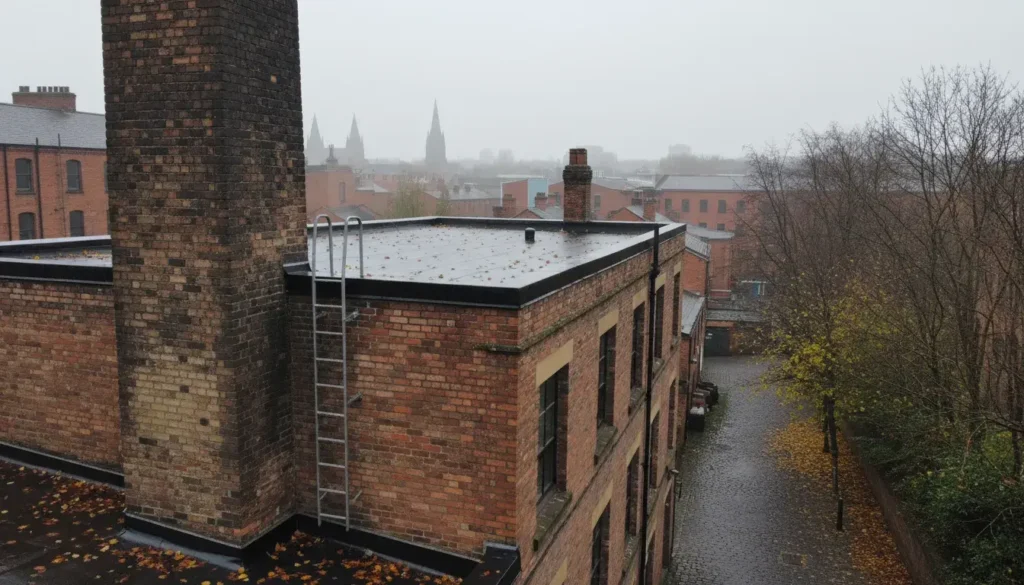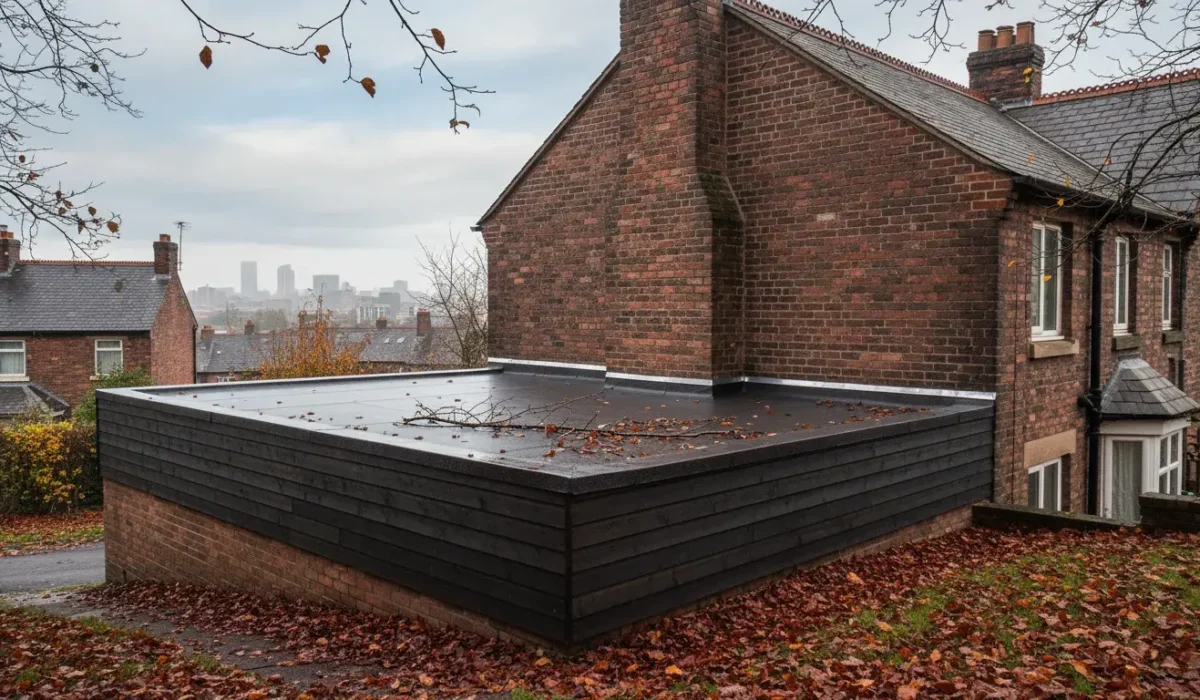Winter-Proof Your Flat Roof: The Essential UK Cold Weather Guide
Flat roofs, common on extensions, garages, and commercial properties across the UK, require focused preparation ahead of the cold, wet winter months. Unlike pitched roofs, their low slope means they rely entirely on the integrity of the waterproofing system and proper drainage to function.
Ignoring roof winter-proofing can lead to serious and costly issues, from compromised insulation to structural timber rot.
1. The Flat Roof’s Winter Adversaries
The UK winter brings three specific threats that flat roofs must contend with:
-
Ponding Water: Any low spot on a flat roof where water stands for more than 48 hours is considered “ponding.” In winter, this water is at risk of freezing, expanding, and creating ice dams. The constant cycle of freezing and thawing puts immense stress on the membrane and underlying structure.
-
The Freeze-Thaw Cycle: Water finds its way into the tiniest cracks. When the temperature drops below freezing, this trapped water expands, pushing the crack wider. As it thaws, more water enters, and the cycle repeats, rapidly turning a minor membrane crack into a full-blown leak.
-
Condensation: In cold weather, warm, moist air from the building rises into the roof cavity. If the roof deck and insulation aren’t properly ventilated and sealed, this moisture condenses into water, soaking the insulation and causing internal damage (known as interstitial condensation).
2. Professional Winter Preparation Checklist
Proactive maintenance is the most effective way to protect your flat roof and avoid emergency call-outs in the middle of a storm.
Address Pooling Water and Drainage
A flat roof must have a positive drainage slope—it should not be perfectly flat. If you observe standing water, professional intervention is required to fix the underlying structural issue.
-
Clear All Debris: Before the worst weather hits, a professional clean-out of all gutters, downspouts, and internal drains is essential. Blocked drainage systems are the number one cause of water pooling and ice dam formation.
-
Inspect Drain Screens: Ensure all drains are fitted with a screen (or cage) to prevent leaves and debris from entering the pipework, which can lead to subterranean blockages.
-
Check Flashing Height: Ensure the perimeter edges of the roof membrane, called upstands (or flashing height), are tall enough to prevent pooling water from creeping over the top edge and running down the side of the wall.
Examine and Maintain Lead Flashing
Lead flashing is used to create a watertight seal where the flat roof meets a vertical structure, like a chimney stack or a wall. This is a common failure point.
-
Check for Cracks and Splits: The continuous expansion and contraction of the lead in fluctuating temperatures can cause it to crack, known as “fatigue.” Look for visible splits, especially at the corners or where the lead is tucked into the brickwork (the chase).
-
Ensure it’s Secure: High winds and thermal movement can cause the lead to lift or “creep” away from the structure. Loose lead flashing is a direct pathway for water ingress.
-
Do NOT Repair with Silicone: A reputable roofer will repair or replace damaged lead using appropriate techniques like welding or the correct lead sealing compounds, ensuring the seal remains flexible and durable—never with non-specialist sealants like silicone.

3. The Insulation Integrity Check: Ensuring Dryness
Wet insulation is useless insulation. If your rood insulation gets damp, it loses its thermal performance, leading to high energy bills and potential structural rot.
The Role of the Vapour Barrier
In modern warm roof systems (where insulation is placed above the roof deck), a vapour control layer (VCL) is installed to prevent warm, moist air from the house from reaching the cold underside of the roof membrane.
Signs your VCL or insulation is compromised:
-
Damp Patches on the Ceiling: Watermarks on the ceiling directly below the flat roof are a clear sign of water ingress, either from a leak or severe condensation.
-
Blistering on the Roof Membrane: Bubbles or blisters on the roof surface can indicate that trapped moisture is trying to escape when the sun warms the roof, or that the membrane has lost adhesion to the substrate due to saturation.
-
Musty Odours: A persistent, damp, musty smell in the room below suggests moisture is trapped within the roof structure or insulation boards.
If you suspect damp insulation, an experienced flat roofing specialist can use non-destructive methods, such as a thermal imaging camera or electronic moisture meter, to identify saturated areas without tearing up the entire roof.
4. Lords Roofing: Your Manchester Winter Partner
Don’t leave your flat roof’s performance to chance this winter. Proactive inspections and minor repairs now are a fraction of the cost of a major leak and subsequent interior damage.
Lords Roofing specialises in robust flat roof systems, including high-performance EPDM rubber, ensuring your property is secure against the worst of the UK’s weather.
Book your pre-winter flat roof inspection today to guarantee a dry, warm winter.


